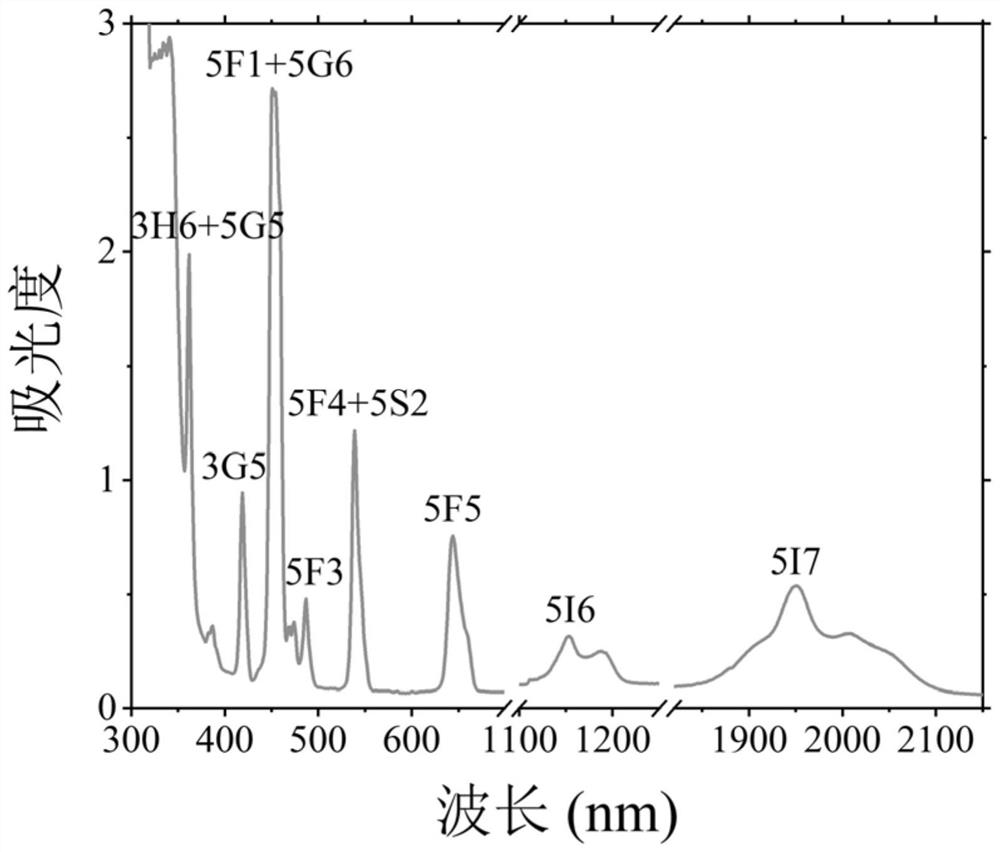Microsphere cavity laser based on ultra-low-threshold multi-component holmium ion doped glass material
A glass material, multi-component technology, used in lasers, phonon exciters, laser components and other directions, can solve the problems of low microsphere quality and high pumping threshold, achieve high Q value, solve low collection energy efficiency, threshold value low effect
- Summary
- Abstract
- Description
- Claims
- Application Information
AI Technical Summary
Problems solved by technology
Method used
Image
Examples
preparation example Construction
[0043] The preparation process of the microcavity laser includes the preparation of glass and the preparation of microspheres, including the following steps:
[0044] Weigh the high-purity raw materials according to a certain ratio, and put them in the ball mill to stir, so that all kinds of raw materials are fully mixed;
[0045] Then the mixture was put into a corundum crucible and heated in a high-temperature furnace at 850 °C for 90 min;
[0046]The molten glass is drawn and cooled to make an optical fiber core. Use a carbon dioxide laser to taper the multi-component doped glass fiber, hang a heavy object at the end of the multi-component glass fiber, and use a focusing lens to focus the laser output from the carbon dioxide laser on the multi-component doped glass fiber First, slowly increase the power of the carbon dioxide laser. When the glass fiber reaches its own softening point, due to the action of the weight, the glass fiber slowly falls, and the fiber diameter gra...
Embodiment
[0054] The glass used in this example has a molar percentage of 72TeO 2 -20ZnO-5Na 2 CO 3 -2Y 2 o 3 -1HoF 3 , in order to prepare fused tellurite glass with a total weight of 10 g, the mass of each component is 8.023 g, 1.1368 g, 0.37 g, 0.3153 g, 0.1549 g. Glass filaments were obtained from molten tellurate glass using glass rods, and further prepared into tellurate microspheres. Connect the 1150nm laser and the quartz tapered optical fiber, and connect the Yokogawa AQ6375B spectrometer, turn on the 1150nm laser, increase the power, and obtain the 2.08 micron laser output from the spectrometer, and its output power is 53nW.
PUM
 Login to View More
Login to View More Abstract
Description
Claims
Application Information
 Login to View More
Login to View More - R&D
- Intellectual Property
- Life Sciences
- Materials
- Tech Scout
- Unparalleled Data Quality
- Higher Quality Content
- 60% Fewer Hallucinations
Browse by: Latest US Patents, China's latest patents, Technical Efficacy Thesaurus, Application Domain, Technology Topic, Popular Technical Reports.
© 2025 PatSnap. All rights reserved.Legal|Privacy policy|Modern Slavery Act Transparency Statement|Sitemap|About US| Contact US: help@patsnap.com



